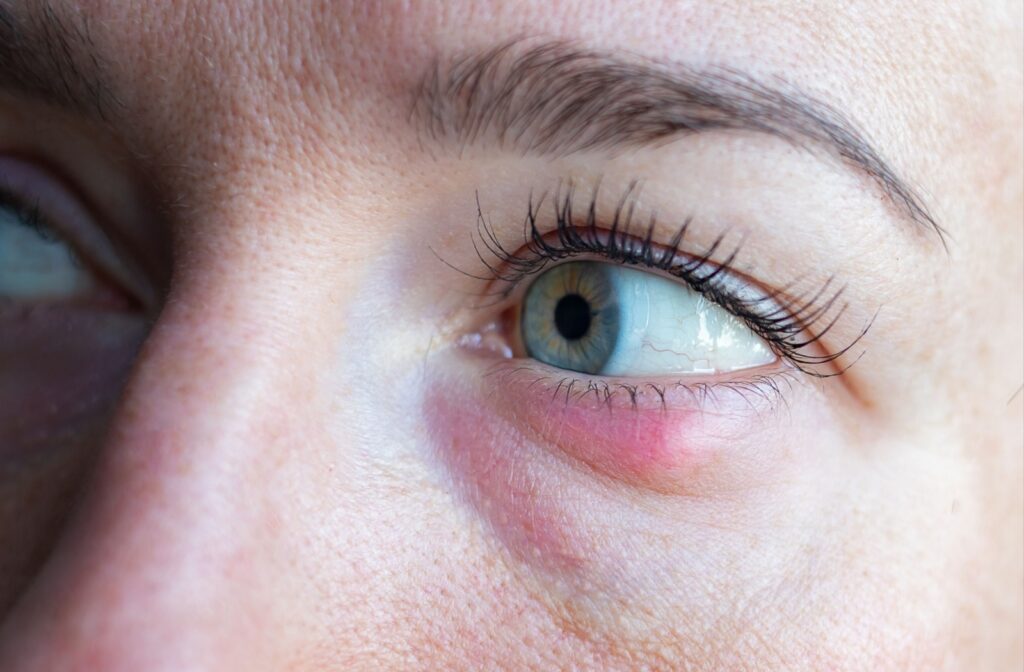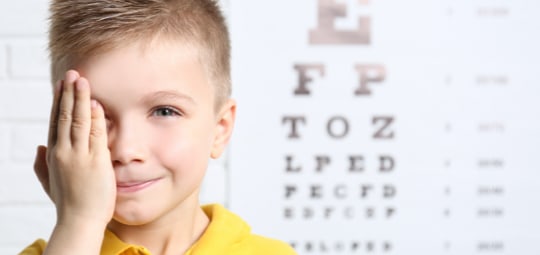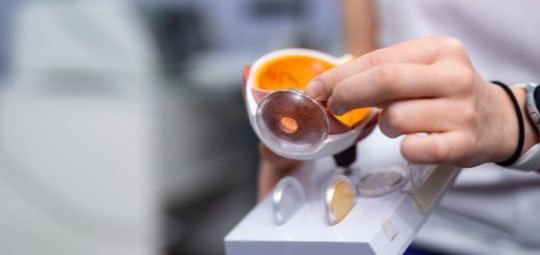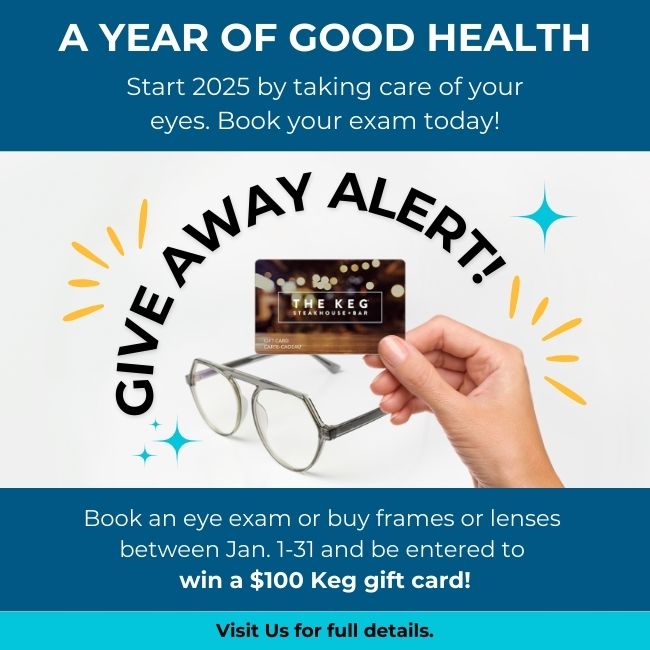Have you ever woken up with red, uncomfortable eyes? If so, you’re not alone. Both pink eye and styes are common eye conditions. They can present with similar symptoms, but they are completely different conditions.
Pink eye (or conjunctivitis) mainly affects the conjunctiva, a thin membrane that covers the white part of the eye (sclera). On the other hand, a stye is a small, painful bump found on the edge of the eyelid.
Both are treatable conditions, but it helps to know the difference. An optometrist can diagnose your eye condition and recommend suitable treatments, so if you suspect you are experiencing pink eye or a stye, book an eye exam.
Pink Eye Explained
Conjunctivitis, commonly known as pink eye, refers to inflammation of the conjunctiva. It’s a thin, clear membrane that covers the white part of your eye (sclera) and the inner part of the eyelid.
The eye can look red or pink because the small blood vessels have dilated (widened) from irritation.
There are multiple types of pink eye, and some can be highly contagious.
Types of Pink Eye
- Viral conjunctivitis is caused by a virus, such as those that cause the common cold & is highly contagious
- Bacterial conjunctivitis is caused by bacteria & is contagious; it can be treated with antibiotics
- Allergic conjunctivitis is not contagious; it happens when the eyes are inflamed from irritants like pollen, animal dander, or dust
- Chemical conjunctivitis is caused by irritants like air pollution or the chlorine in swimming pools; it’s not contagious
Symptoms of Pink Eye
Pink symptoms include:
- Pink or reddish colour in the white parts of the eye
- Yellow or watery discharge that can be sticky, stringy, or watery
- Watery & excessive tears
- Itchiness, burning, & swelling
- Light sensitivity
Visit your eye doctor if you experience these symptoms or suspect conjunctivitis. They can diagnose the type of pink eye you have and recommend appropriate treatments.
For instance, antibiotics can work against bacterial conjunctivitis but will not work against viral conjunctivitis.
Styes Explained
A stye or external hordeolum is a small, painful bump on the edge of the eyelid. It can look like a pimple.
Styes happen when an oil gland is blocked and infected with bacteria, often Staphylococcus aureus. They’re rarely contagious and usually clear up on their own. However, warm compresses can help with the healing process.
Symptoms of styes include:
- Swollen eyelid
- Excessive tears
- Discomfort & itching
- Light sensitivity
- Sensation that something’s in your eye
- Discharge & crusting
Inflammation and discharge can make distinguishing a stye from pink eye difficult. Visiting your optometrist for an accurate diagnosis is essential for taking appropriate action.
In some cases, styes that are large or develop beneath the eyelid (internal hordeolum) may require lancing (to drain fluid buildup) by a professional.
Difference Between Pink Eye & Styes
You should always visit an eye doctor for a proper diagnosis of pink eye or styes. But there are signs you can look out for if you can’t access an eye care professional right away.
The first thing you should note is the location of your symptoms. Pink eye typically affects the white part of the eye, while styes tend to happen on the edge of the eyelid. With styes, there is also a visible bump. Discomfort and irritation may be localized to this bump.
Treatment Options
Once properly diagnosed, pink eye and styes are treatable conditions.
Pink Eye
Bacterial conjunctivitis can be treated with antibiotic eye drops or ointments. However, antibiotics will not work on viral conjunctivitis, which typically heals by itself between 7 days and a few weeks.
It’s crucial to prioritize hygiene when you have infectious conjunctivitis:
- Disinfect surfaces
- Don’t share towels or cosmetics
- Wash your hands frequently
People with viral conjunctivitis should stay away from work or school for 2 weeks from infection onset.
Like most allergic reactions, allergic conjunctivitis can be managed with antihistamines.
Treatment of chemical conjunctivitis depends on the irritant. In some cases, it can be a medical emergency. Your eye doctor can help guide you through managing any urgent eye concern. Ontario residents can also contact Ontario Poison Control 24 hours a day, 365 days a year.
Stye
Styes often heal on their own within a week. However, you can promote healing by applying a warm compress for 15 minutes 3–4 times daily. The stye will then burst, and the pus should be cleaned out. You can also ask your optometrist about antibiotic ointments.
The stye may require professional removal if it is large or under the eyelid.
Personalized Care for Relieving Irritated Eyes at Stoney Creek Optometry
Recognizing the difference between pink eye and styes can be challenging, as they can share some of the same symptoms. However, both conditions can cause discomfort and impact your quality of life.
If you’re concerned about pink eye or a stye, visit Stoney Creek Optometry. With our long-standing service to the community since 1982, we aim to make eye care convenient for our patients. Our extended hours, including evenings and Saturdays, are there for you.
Book an appointment with us today.






















